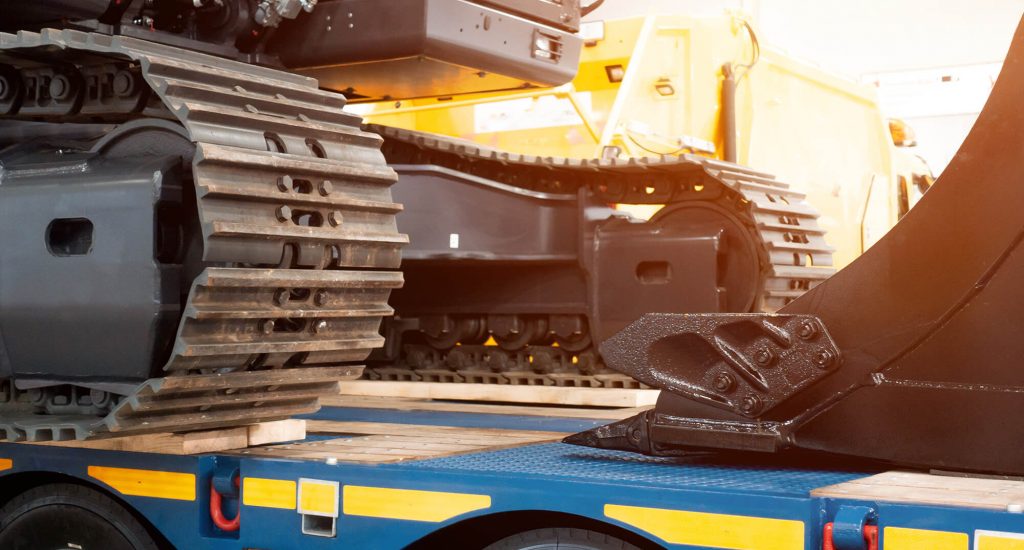Most people encounter heavy haulers on the highway, carrying large, often wide loads within city limits or across state lines. These trucks are specially equipped and measured to transport whatever heavy equipment or materials they carry. Strict regulations and guidelines ensure that these trucks are safely transporting the heavy equipment.
Known in the industry as heavy haulers, these large trucks play an important role in the transportation of necessary materials across many sectors. Here’s what you need to know about some of the most common heavy hauling loads.
The World of Heavy Hauling and What It Entails
Heavy haul refers to the transport of anything beyond conventional dimensions. The conventional dimensions can differ slightly from state to state, but generally anything above 8.6 feet in width or higher than 13.6 feet, or longer than 53 feet will be considered unconventional. Similarly, if the cargo is beyond 80,000 pounds, it is generally considered a ‘heavy load.’
This type of cargo includes wide loads, oversized freight, heavy equipment, military equipment, airplane parts, etc. Hauling and transporting this type of cargo has its own type of challenges, and it requires experienced and qualified operators that understand how to properly load a truck, the kind of truck to use, and how to properly fasten the load to the vehicle.
Several types of heavy haulers exist in the industry, each built differently to facilitate different types of cargo. Common types of heavy haulers include:
- Flat deck: These are the most well-known, perhaps, as they are the most common on city highways. They have an open flat surface on the back without any walls or roof.
- Step-deck: This trailer can drop a level and also have no roofs or walls. This is a great vehicle to transport certain equipment like cranes and bulldozers because of its versatility. Some of the step deck vehicles have built-in ramps to allow easy access to the cargo.
- Removable goose-neck trailer: Tall and long oversized loads such as turbines or wind propellers are typically transported using this type of hauler. These trailers have a detachable front, which makes loading convenient. They are designed to handle tall and long loads and can manage up to 42,000 lbs.
- Lowboy trailer: This trailer has two drops at the freight deck. These trailers can carry tall loads and handle large construction and industrial equipment.
- Stretch single drop and double drop deck trailers: These trailers are also designed for super long loads that are too oversized for a regular flatbed trailer. These trailers can stretch up to 35” to 65” and hold up to 45,000 pounds.
What do Heavy Haulers Commonly Transport?
Whether it’s factories, power plants, airplane hangers, or military bases, the need to transport heavy equipment is part of keeping operations going. So as you see heavy haulers on the road, here are the five most common types of loads they are likely to be carrying.
- Equipment. This is a broad category but it covers a lot of bases for commonly transported materials. Equipment includes necessary materials or vehicles used in construction and mining. Some of these construction vehicles include cranes, bulldozers, excavators, loaders, and tractors. Other equipment includes large cookers or boilers used in food production factories. Cargo can also range from airplane parts to mini-submarines or more.
- Construction Materials. The construction industry uses a lot of heavy equipment but also a lot of heavy materials in their construction sites. Materials used in construction sites include wood, metal, and cement materials. Other construction equipment includes metal support beams, prefabricated concrete slabs or elements, roof joists, structural steel, trusses, rebar, as well as masonry materials like bricks, cement, or tiles.
- Energy Sector Equipment. It’s quite possible you’ve seen a heavy hauler carrying what looks like a giant propeller and slowing traffic down in the process. This scenario is common in the world of heavy hauling, as a lot of equipment and materials for the energy sector also require the use of heavy trailers. Common loads include turbines, transformers, and large propellers that are part of wind power production.
- Military Equipment. The military often requires the transport of its vehicles or equipment across state lines or within the same city. The military will use heavy-duty gooseneck trailers or flatbeds to carry things like tanks, armored vehicles, and other military-grade vehicles or cargo.
Need Some Heavy Hauling in Iowa? Contact a Trusted Trucking Company
White Oak Trucking operates heavy haulers throughout the greater Des Moines area. Our specialty is in hauling anything beyond conventional dimensions. If you have construction materials or industrial equipment that needs transportation, White Oak Trucking team has you covered.
Want to learn more? Call White Oak Trucking today.
